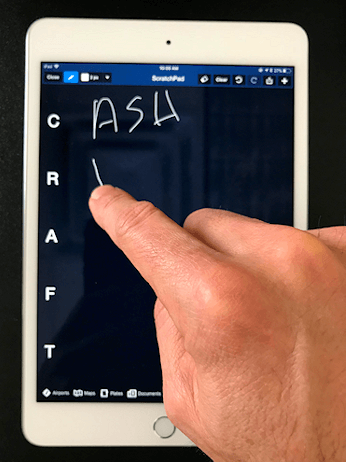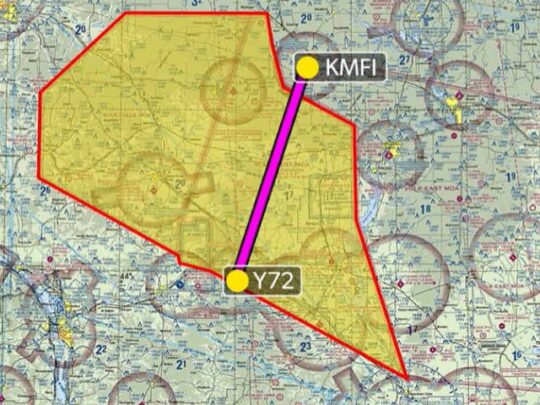Subscriber question:
"Do you have any tips on how to copy your IFR clearance correctly the first time?"
- Rick C.
Wally:
 “We all want to sound cool when we get that clearance, but often we wind up sounding more like Elmer Fudd. A little preparation will go a long way toward making us sound more like Chuck Yeager.
“We all want to sound cool when we get that clearance, but often we wind up sounding more like Elmer Fudd. A little preparation will go a long way toward making us sound more like Chuck Yeager.
First, note that all ATC route clearances are given in the same order. So most instructors I know teach their instrument students to write a vertical column of letters on their pad. The letters from top to bottom are CRAFT.
The first letter in the column is C which stands for the clearance limit. Next R is for route, A is for altitude, F is for departure control frequency and T is for transponder code. So now all you have to do is fill in the blanks. Reading the clearance back from top to bottom will impress your controller and all who are listening on the frequency.
Now I add a little more to that to make it even easier. Almost all of the time the clearance limit is to the destination airport, so I write that down before I call for the clearance. Now I am ready for that tricky part, the route. What I often see is pilots get so wrapped up spelling the destination airport, they are already behind when it gets to the hard stuff. So having that already down gets me ahead rather than behind. Nowadays it is common to get cleared as filed so I also suggest making a symbol that you can quickly scratch on your pad rather than writing that out. One more thing is that the departure control frequency will always start with the number 1, so I put that down before I call as well.
If you happen to be departing from a non-towered airport you are going to need a few more notes since your clearance will have a void time. When that is the case I put the initials CV for clearance void time and CT for current time just below my CRAFT.
So what do you do if you blow it in the middle of the clearance? Guess what, we are all going to do that from time to time. This usually occurs in the middle of the route part of the clearance. Don’t try to make it up. Just give up and get ready to copy the rest of the clearance so you can get at least some of it correct. Read back what you have and ask for a repeat of the things you missed.
However you do it, be sure you understand the clearance before you launch off into the system.”

